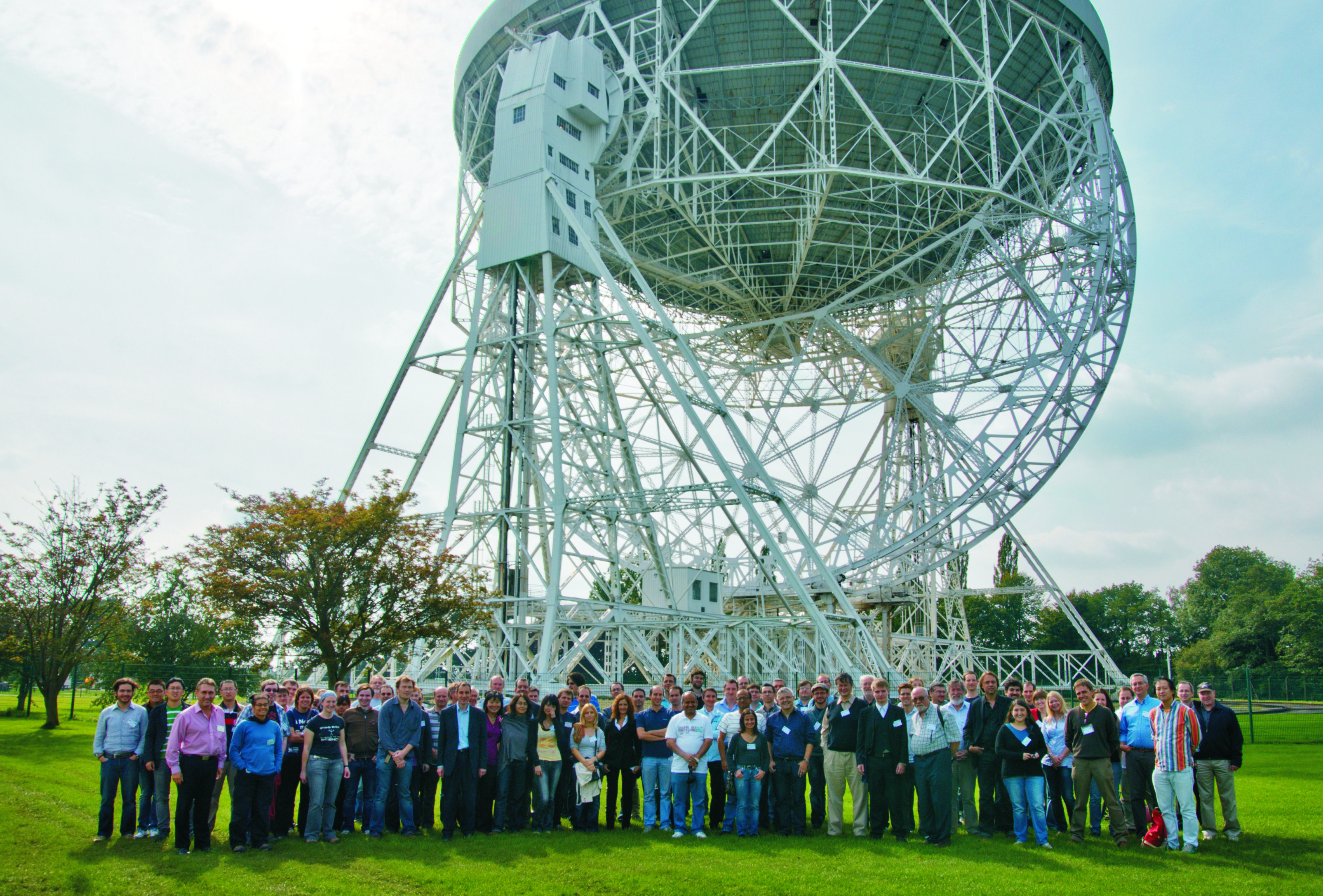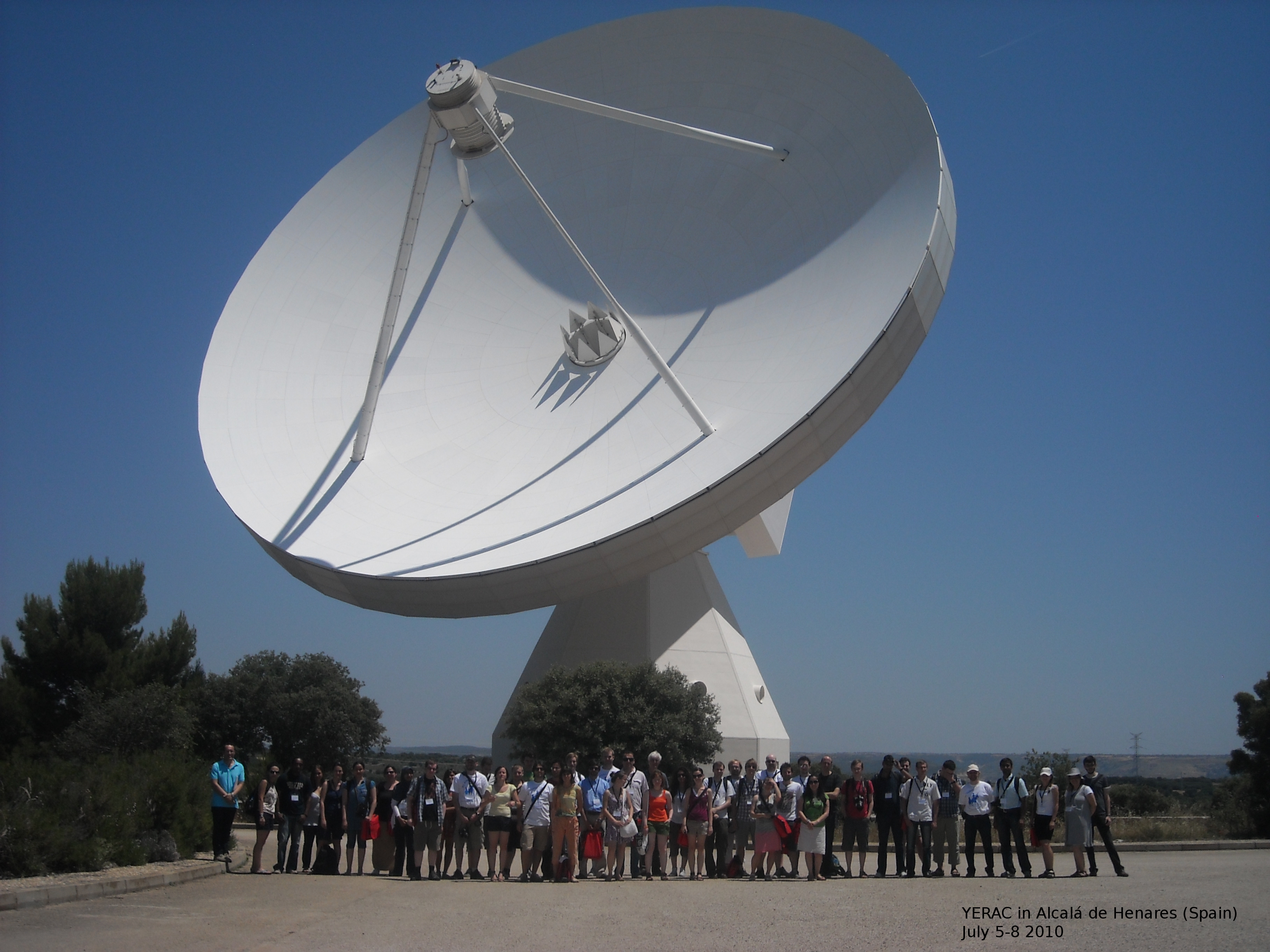|
|
European
VLBI Network Newsletter Number
28 January 2011 |
|
Contents
|
|
1.
Message from the
EVN Chairman 2.
Call for EVN
Proposals - Deadline February 1st 2011 4.
EVN technical
development and operations: |
|
|
1. Message
from the EVN Chairman
Dear Readers,
The latest EVN Newsletter provides you with updates on EVN activities,
technological development and on the most interesting scientific results.
On behalf of EVN CBD I.d like to give some details concerning decisions
taken by EVN Directors.
First I would like to express our gratitude to Prof. Andrei Finkelstein and
the IAA team for excellent organization of EVN CBD at St. Petersburg in
October 2010 and for the visit to Svetloe 32m telescope - Kvazar station.
The Russian Kvazar Network incorporated into EVN in November 2009 provides
since stream of valuable data including the once of real time operation of
e-EVN mode.
The next CBD will be hosted by the TCfA at Torun in the beginning of May.
We
hope that this time no more volcanoes and other disruptive events would
strike us.
Special thanks and congratulations are forwarded to Simon Garrington and the
LOC for organization of EVN Symposium 2010. The meeting was highly
successful, and the EVN science played a central role in it. Among the 70
oral presentations and 40 posters, most were based on EVN observations. The
organizers got a support from Radionet, which allowed them to get a full
coverage for conference fee for younger participants.
Another important meeting - YERAC 2010 was held in Alcala near Madrid in
July. The
meeting was successful, there were more than 40 young participants
representing European Institutes. Special thanks go to Paco Colomer and
Rafael Bachiller for their excellent organization (look at the attached
photo of happy participants !).
All the EVN services function normally. We notice steady progress in Network
operation, the technical development and scientific results. The European
VLBI Network seems to be at good condition however, the future of VLBI may
not look so bright in general especially in the era of ALMA and SKA. The VLBA
has already encountered problem to get sufficient NSF support but surely it
will continue its operation, perhaps in some sort of closer liaison with the
EVN.
The e-EVN takes the lead among other SKA pathfinders as the most advanced
e-network in the world. It needs though a new generation correlator to
fulfill the future expectations and to remain in its present position. A new
organization structure and possibly new legal entity will be required for
JIVE in order to secure its scientific and technology centre position. JIVE
considers transition to ERIC (European Research Infrastructure Consortium).
New stations aspire to enter the EVN. Simeiz Crimean Astrophysical
Observatory with 22m high precision antenna has already expressed interest
to join the Network, and the Radio Astronomy Institute of Ukrainian Academy
of Sciences with 70m antenna at Evpatoria considers forwarding its
application. With the coming commissioning of SRT this year and the final
inclusion of 32m at Venspils, the strength of EVN will make the network an
outstanding facility. Quality of science projects and a wide range of
observational options will reinforce the Network as the world leading
instrument for high angular resolution astrophysics. It also should remain
its strong position in time of ALMA and SKA operation.
The recent highlights both in the science and technology development are
gathered by the editor and presented in the newsletter. I will just draw
your attention to some of them.
An interesting identification of AGN in IR double galaxy Arp 299 and a
presence of close SNR is reported here by Miguel A. Perez-Torres et. al.
The important results of VLBI studies on a sample of low luminosity compact
objects are described by Kunert-Bajraszewska, she presents conclusions on
evolutionary tracks (GPS-CSS-FR) for low luminosity radio galaxies.
Marecki and Swoboda announce their EVN findings on B0847+548 quasar and
bring up an evidence that the quasar, which was radio-loud earlier, switched
recently to the radio-quiet state.
An important development on the SFXC JIVE correlator in pulsar mode is
described by Bob Campbell and collaborators. The correlation results
obtained for two projects (EVN18A, EY011) to observe pulsars were very
successful. This test shows new capabilities of EVN for precise astrometry
with pulsars. Congratulations to JIVE correlator staff .
Preparation for RADIOASTRON mission data handling and processing is
described by Chuprikov et al. A conversion data formats is working fine and
the correlator of Astro Space Centre in Russia demonstrates its
capabilities to support future data stream processing.
A new and extremely important for the EVN future is the current development
of MeerKAT system in South Africa. Roy Booth gives detailed description of
the work including operation of MeerKAT in phased mode as the EVN single
element sites as well as presents a proposal to build African VLBI
Network based on existing (up to 10) communication antennas located on
African continent. If this project is realized it would bring fantastic
improvement on the performance of combined EVN+AVA networks for low DEC
sources and sensitivity.
On behalf of EVN CBD I attach very special greeting for the
New Year with the wish that it proves to be happy, prosperous and
successful.
Let the 2011 create many good reasons and opportunities to meet together, to
discuss scientific achievements and to celebrate EVN founded friendship.
Andrzej Kus, Chairman of the EVN Board of Directors.
2. Call
for EVN Proposals - Deadline February 1st 2011
ALL EVN,
GLOBAL, and e-VLBI PROPOSALS must now be submitted
with the
ONLINE
PROPOSAL SUBMISSION tool Northstar.
(This text is also
available on the web at http://www.ira.inaf.it/evn_doc/call.txt)
Observing proposals are
invited for the EVN, a VLBI network of radio telescopes spread throughout
The
observations may be conducted with disk recording (standard EVN) or in real-time
(e-VLBI).
The
EVN is open to all astronomers. Use of the Network by astronomers not
specialized in the VLBI technique is encouraged.
The
Joint Institute for VLBI in Europe (JIVE) can provide support and advice on
project preparation, scheduling, correlation and analysis. See EVN User Support
at http://www.jive.nl.
Future Standard
EVN Observing Sessions (disk recording)
|
2011 Session 2 |
May 26 - Jun 16 |
18/21cm, 6cm ...
|
|
2011 Session 3 |
Oct 20 - Nov 10 |
18/21cm, 6cm ...
|
Proposals received by 1st February 2011 will be considered for scheduling
in Session 2, 2011 or later. Finalisation of the planned observing
wavelengths will depend on proposal pressure.
Future e-EVN
Observing Sessions (real-time correlation)
|
2011 Mar 22 - Mar 23 (start at 13
UTC) 2011 Apr 12 - Apr 13 (start at 13
UTC) 2011 May 17 - May 18 (start at 13
UTC) |
18/21cm, 6cm, 5cm or 1.3cm 18/21cm, 6cm, 5cm or 1.3cm 18/21cm, 6cm, 5cm or 1.3cm
|
Please consult the e-EVN web page
at
http://www.evlbi.org/evlbi/e-vlbi_status.html
to check for possible updates, and for the available array.
e-VLBI proposals submitted by the February 1st deadline will be
considered for scheduling in the above sessions starting from March 22nd.
Note
that only one wavelength will be run in each session, depending on proposal
priorities.
See http://www.ira.inaf.it/evn_doc/guidelines.html for details
concerning the e-VLBI observation classes and the observing modes.
From April 2011 due to e-MERLIN commissioning, VLBI at e-MERLIN
out-stations will not be possible, and JB1 will be the only
homestation available. After commissioning, only separate EVN and
e-MERLIN observations will initially be scheduled.
For updated information please consult the web at http://www.e-merlin.ac.uk/vlbi
Proposals requesting EVN + e-MERLIN should indicate clearly whether
separate EVN and e-MERLIN observations are sufficient, or whether
scheduling should await simultaneous VLBI at e-MERLIN outstations.
Simultaneous wide-bandwidth VLBI and e-MERLIN operations at
e-MERLIN outstations are planned for 2012.
Please
consult
http://www.evlbi.org/evlbi/e-vlbi_status.html
and the EVN User Guide (
http://www.evlbi.org/user_guide/user_guide.html"
for updates on the current EVN and e-EVN array; availability of
different stations per observing band and for the dates of the e-EVN
observing sessions.
Global proposals
Please note that NRAO has moved from a trimester system to a semester
system with proposal deadlines of February 1st and August 1st.
The first semester-based deadline will be 2011 February 1 (see
http://www.nrao.edu/admin/do/vlba-gvlbi.shtml).
PIs wishing to apply for Global VLBI time should continue to
submit their proposals at the EVN deadlines using the Northstar on-line
proposal submission tool.
Large
EVN projects Most
proposals request 12-48 hrs observing time. The EVN Program Committee (PC) also
encourages larger projects (>48 hrs); these will be subject to more detailed
scrutiny, and the EVN PC may, in some cases, attach conditions on the release of
the data. All
EVN, Global and e-VLBI proposals (except ToO
proposals) must be submitted using the on-line proposal
submission tool Northstar. Global proposals will
be forwarded to NRAO automatically and do not need to be submitted to NRAO
separately.
New proposers should register at
http://proposal.jive.nlFeatures
for the next regular EVN and e-VLBI sessions
How to
submit
Additional
information
Further information on
Global VLBI, EVN+MERLIN and e-VLBI observations, and guidelines for proposal
submission are available at:
http://www.ira.inaf.it/evn_doc/guidelines.html
The
EVN User Guide (http://www.evlbi.org/user_guide/user_guide.html) describes
the network and provides general information on its
capabilities.
The
current antenna capabilities can be found in the status tables. For the standard
EVN see http://www.evlbi.org/user_guide/EVNstatus.txt. For the
e-VLBI array see http://www.evlbi.org/evlbi/e-vlbi_status.html
The
On-line VLBI catalogue (http://db.ira.inaf.it/evn/) lists
sources observed by the EVN and Global VLBI.
Tiziana Venturi - Chairperson of the EVN Program
Committee
3. EVN
Scientific Highlights
Serendipitous discovery of the long-sought AGN in Arp 299-A
Within the constellation of Ursa Major, at a distance of 44 Mpc lies the
luminous infrared
galaxy Arp 299, which is the result of the merging of two galaxies, IC 694
(also known as Arp
299-A) and NGC 3690 (=Arp 299-B1).
The large far-infrared luminosity of Arp 299-A, which accounts for about 50%
of the total in
Arp 299, should result in about 1 SN/yr if standard relations between
far-infrared luminosity
and core-collapse supernova (CCSN) rates hold.
We observed Arp 299-A with the eEVN in 2008, and found indeed a large number
of compact
sources in its inner 150 pc, most likely young CCSNe and supernova remnants
(SNRs) (see EVN Newsletter No. 25
and Perez-Torres et al. 2009, A&A, 507, L17). We
therefore requested
further observations, this time using the full-EVN at 1.7 and 5.0 GHz, to
characterize the
nature of all these compact sources and with the final aim of determining
the core-collapse
supernova rate for this galaxy after a three-year long monitoring.
Fig. 1 shows an "spin-off" result from these observations. The top panel
shows the inner 150
pc region of Arp 299-A as imaged with the full EVN at 5.0 GHz, with all the
white blobs being
the compact sources we wanted to characterize. What caught our interest was
the line of
objects toward the top right of this image (the A1-A5 region). This was not
a chance
alignment, but could either be a chain of supernovae and SNRs in a super
star cluster
approximately 500 years old, or a core and jet of a hidden AGN. The chances
that the objects
belong to such superstar cluster are less than 3 in a million, and therefore
we ruled out this
possibility. On the other hand, the morphology, radio luminosity, spectral
index and ratio of
radio-to-X-ray emission of the A1~VA5 region are consistent with a
low-luminosity AGN (LLAGN).
We therefore identified the A1~VA5 region with the long-sought AGN in Arp
299-A.
Interestingly, the object labelled A0 is not part of the AGN. Actually, it
is a supernova
discovered in 2004 by Neff and collaborators. At a mere projected distance
of less than 2 pc
from the AGN, it is one of the closest to a central supermassive black hole
ever detected. And
we hypothesize that this vicinity of massive stars could be the reason why
Arp 299-A AGN is so
weak ~V nearby massive stars heating their surroundings and dispelling the
material that it
would normally accrete.
Full details can be found in A&A (
Perez-Torres et al. 2010, A&A, 519, L5),
where our Figure is
one of the three highlights for the Vol. 519 of the September 2010 issue.
Authors:
Miguel A. Perez-Torres, Antonio Alberdi, Cristina Romero-Canizales
(IAA-CSIC,Granada, Spain), and Marco Bondi (IRA-INAF, Bologna, Italy)
We present a radio and optical analysis of a sample of Low Luminosity
Compact (LLC) objects, selected from FIRST survey and observed with MERLIN
at L-band and C-band. About 70% of the observed LLC sources are galaxies and
all of them are nearby objects with redshifts
The optical analysis of the LLC sources were made based on the available
SDSS images and spectra (Kunert-Bajraszewska et al., 2010b). We have classified the sources as high and low
excitation galaxies (HEG and LEG, respectively). We have compared the [OIII]
luminosity with the radio properties for LLC sources, and expanded the
sample with other CSS, GPS sources and FRI and FRII objects. The whole
sample shows that, for a given size or radio luminosity, HEG sources are
brighter than LEG in the [OIII] line by a factor of 10. The LLC objects
follow the same correlation between [OIII] luminosity and radio power, as
the rest of the sample, although the LLC objects have lower values of [OIII]
luminosity than the more powerful CSS sources.
Based on the analysis above, we propose a scenario where the differences in
the nature of LEG and HEG (accretion mode or black hole spin) are already
visible in the CSS phase of AGN evolution and determine the evolution of the
source: i.e. CSSLEG evolve to FRLEG,
CSSHEG evolve to FRHEG. The main
evolution scenario (GPS-CSS-FRII) was proposed years ago. However, once the
HEG/LEG division is included, these sources seem to evolve in parallel
(Fig.1c):
GPSLEG-CSSLEG-FRLEG and
GPSHEG-CSSHEG-FRHEG.
Concerning LEG, it is still not clear if CSSLEG would evolve directly to
FRILEG or go through a FRIILEG phase before the
FRILEG. As discussed in
Kunert-Bajraszewska et al., 2010a, there should also exist a group of
short-lived CSS objects with lower radio luminosities. These short-lived
CSSs could probably show the low [OIII] luminosities seen in FRIs.
The above results have been published in
Kunert-Bajraszewska et al.(2010a), MNRAS, 408, 2261 and Kunert-Bajraszewska et
al.(2010b), MNRAS, 408, 2279
Authors:
M. Kunert-Bajraszewska (TCfA), A. Labiano (ESAC), M. Gawronski (TCfA),
A.Siemiginowska (SAO)
Fig.1:
a) 0821+321 - a candidate for a compact fader, b) Luminosity-size
diagram for AGNs; c) [OIII] luminosity - radio luminosity diagram for AGNs
classified as HEG and LEG. Squares indicate CSS sources from samples of
Labiano et al.(2007), Laing et al.(1983), Willott et al.(1999), Fanti et
al.(2001) and Marecki et al.(2003). The diamonds indicate GPS and HFP
objects from sample Labiano et al.(2007). The circles indicate FRI and FRII
objects from samples of Laing et al.(1983), Buttiglione et al.(2009a,b,
2010) and Willot et al.(1999). The triangles indicate the current sample
of LLC sources.
We investigated three quasars with large-scale radio lobes that are clearly
asymmetric - one lobe is of Fanaroff-Riley II type, while the other one is a
diffuse relic devoid of a hotspot. The FIRST image of one of our targets is
shown in Fig.1. We hypothesized that the prime cause of the asymmetry of
these radio sources is that the nuclei of their host galaxies currently
produce no jets. To prove that, we observed them with the e-EVN to check if
they are similar to those in radio-quiet quasars. The observations carried
out with 11 stations including Sh and Ur at 18 cm (project EM078) - see
Fig.2 for the example - revealed that the nuclei of the quasars under
investigation are not of a core-jet type that is characteristic for
radio-loud quasars, either core- or lobe-dominated. It follows that the
lobes are no longer fuelled and that their apparent asymmetry results from
the orientation, which causes a time lag of the order of 106 years between
their images: the lobe perceived as a relic is nearer than the lobe with a
hotspot and so it is observed in a later stage of the decay. We concluded
that the quasars under investigation were radio-loud earlier, but now they
have switched to the radio-quiet state.
Reference:Marecki & Swoboda, 2011, A&A, 525, A6
Authors:
Andrzej Marecki & Bartlomiej Swoboda (TCfA)
Fig.1:
FIRST image of a quasar B0847+548 with asymmetric large-scale
structure: the eastern lobe is FRII-like while the western one is a
relic.
We claim that the central engine no longer produces jets, although, due to
a light-travel time lag, the far-side eastern lobe still looks normal.
Fig.2:
e-EVN image of the core of B0847+548. It is weak, diffuse and not
of core-jet type as normally in radio-loud quasars. Instead, cores of this
kind used to be identified with radio-quiet quasars.
VLBI astrometry of pulsars can yield the positions, proper-motions, and
trigonometric parallaxes of the pulsars. Such results combined with other
data can be used in general to provide constraints on the Galactic
electron-density distribution (parallax + dispersion measure), to place
bounds on the pulsars' birthplaces and supernova physics (parallax + proper
motion + age estimate), to investigate turbulence in the ISM (parallax +
scattering-disk angular diameters), and to contribute towards a tie between
the ICRF and dynamic reference frames (ms-PSRs + time-of-arrival data).
Pulsar kinematics can also inform a variety of source-specific
investigations.
The SNR of pulsar scans can be increased by use of gating, in which only
samples within a specified time interval each pulsar period (i.e., on
pulse)
are accumulated during correlation. The sensitivity and array composition
of VLBI pulsar astrometry using gated correlation has improved markedly with
evolving technologies -- from 3-station, 4 Mbps Mark II observations (Gwinn
et al. 1986) to 6-station, 112 Mbps Mark IIIA observations (Campbell et al.
1996) to the series of VLBA and LBA observations at up to 512 Mbps (e.g.,
Brisken et al. 2002, Chatterjee et al. 2009, Deller et al. 2009) -- with
corresponding improvements in the astrometric solutions. The EVN MarkIV
correlator made some initial pulsar-gating developments (e.g., Campbell
2001)
to open up Gbps pulsar observations, but these never came to fruition
operationally.
In the May 2010 EVN newsletter, Moldon et al. (2010) reported the gated
correlation of their experiment EM080A (Gbps, L-band) on the DiFX software
correlator in Bonn, the first EVN user-experiment gated pulsar correlation
take place in Europe since the days of the Mark IIIA (GC021B, Nov'98).
In the January 2010 EVN newsletter, Keimpema & Kettenis (2010) reported
progress in establishing pulsar gating on the new SFXC software correlator
at JIVE, and an update was provided during the 2010 EVN Symposium in Jodrell
Bank (Campbell 2011). SFXC can provide an arbitrary number of
equally-spaced
bins within a specified gate, with each bin resulting in an independent
correlator output. Traditional pulsar gating as a means to boost SNR of
pulsar scans would correspond to one bin. The top panel of figure 1 shows
a reconstruction of the 1.4 GHz pulse profile of PSR B0329+54 comprising
100 bins over a 0.1-period gate centered on the pulse. This compares well
to the pulse profile from Sieber et al. (1975) shown in the panel below.
The gating is driven by polyco files from the pulsar timing software tempo.
The ability to reconstruct the pulse profile via bins simplifies checking
the gating and setting an optimal gate width (if the pulsar itself is
detectable on its own), compared to the situation that pertained in the
Mark IIIA correlator.
Availability of gated correlation at JIVE was announced in the June EVN
Call for Proposals. We have completed correlation of our first two pulsar
user experiments: one from session 2/2010 of 3 normal pulsars (EV018A;
Gbps, C-band) and one from session 3/2010 of an P=2.3ms ms-PSR that is
very bright in X-rays (EY011; 512 Mbps, L-band). In EV018A, the raw
correlator phases per integration clearly showed that each pulsar was
detected after gating (i.e., even prior to fringing or phase-referencing);
the added sensitivity of the EVN Gbps opens up the astrometric advantages
of higher frequency observations (e.g., smaller beam, reduced ionospheric
influence). Improved uncertainties will allow tighter constraints on Monte
Carlo pulsar orbits traced back through the Galactic potential, leading
to more reliable tests of hypothesized associations with other neutron or
run-away stars at their births. Figure 2 is an EVN pipeline calibrated
and phase-referenced image of the ms-PSR from EY011, showing a detection
at ~0.7 mJy/beam. The image origin reflects the position inferred from
timing observations, including timing-derived proper motion. Here,
inclusion
of VLBI kinematics with the timing solutions will help reduce the latter's
input covariances; a possible application could be a network of X-ray
pulsars
with good astrometric and timing solutions serving as beacons for navigation
of deep-space satellites carrying small X-ray detectors.
Bob Campbell, Aard Keimpema, Mark Kettenis, Jun Yang (JIVE),
Wouter Vlemmings (Argelander Institute for Astronomy, U. Bonn),
Ding Chen (National Time Service Center, P.R. China)
References:
Figure 1
Figure 2
Results of processing of data of a VLBI experiment titled RAPL01 are
presented.
These VLBI observations were made on 4th February, 2010 at 6.28 cm between
the 100-m antenna
of the Max Planck Institute (Effelsberg, Germany), Puschino 22-m antenna
(Astro Space Center (ASC),
Russia), and two 32-m antennas of the Istituto di Radioastronomia di Bologna
(Bologna, Italy) in
Noto and Medicina. 2 well-known sources, 3C84 (0316+413), and BL Lac
(2200+420) were included in
the schedule of observations. Each of them was observed during 1 hour at all
the stations.
The Mark-5A registration system was used at 3 European antennae. The
alternative registration
system known as RDR (RADIOASTRON Data Recorder) was
used in Puschino. The Puschino data were recorded in format RDF (RADIOASTRON
Data Format).
Two standard recording modes designed as 128-4-1 (one bit), and 256-4-2 (two
bit) were used in the
experiment.
All the Mark-5A data from European antennae were successfully converted into
the RDF format.
Then, the correlation function was estimated at the ASC software
correlator. A similar correlation
function
also was estimated at the Bonn correlator. The Bonn correlator reads Mark5A
data, the RDF format
was converted
into Mark5B format before correlation. The goal of the experiment was to
check the functioning and
data analysis of the ground based radio telescopes for the RADIOASTRON SVLBI
mission}
The correlator estimates the visibility as a function of time and frequency.
A phase of this complex
function is shown in Figures 1, and 2.
If a fringe rate (or fringe frequency) is still not compensated, there is a
considerable phase slope. This may be due to several effects. For instance,
it could be considerable
if there
is some instability of heterodyne at any antenna of a baseline. A slope
restricts the coherence time
which is
equal to time interval corresponding to the phase drift of 180 degrees.
Fig.1
Visibility phase vs time for the Effelsberg-Medicina baseline. Scan no. 3
(2200+420).
The maximum integration time is 2 minutes.
Fig.2
Visibility phase vs time for the Effelsberg-Puschino baseline. Scan no. 3
(2200+420).
The maximum integration time is 0.3 seconds.
The correlator of ASC uses the special
software module titled ARIADNA for estimation of delay for any
interferometer baseline and any
interval of
observational time. Then, there is a possibility to compensate the residual
delay as well as the
residual fringe rate at the input of the correlator.
Values of residuals with respect to the reference antenna
in Effelsberg were the following :
It is clear from Figure 3 that visibility phase values are between -280 and
-140 degrees after the
compensation. Such the residual phase oscillations are reliable and can be
corrected during the
secondary data
processing. The value of residual fringe rate can be easily estimated from
the phase slope value
(148.54795 degrees per second). Then, the residual fringe rate value is
equal to 0.4137. This is
close to the value mentioned above (0.412).
The Signal-to-Noise Ratio (SNR) was measured for each baseline. The
dependence of the Signal to RMS
multiplied by 6 value on integration time for the data of scan no. 8 from
the Effelsberg-Noto
baseline and RR polarization is shown in Figure 4.
Fig.3
Visibility phase vs time for the Effelsberg-Puschino baseline BEFORE (A) and
AFTER (B)
the residual fringe rate compensation.
Fig.4
Signal-to-Noise ratio (SNR) vs the integration time.
It is clear from this figure, that the saturation of SNR takes place
when the integration time is more than 2 seconds. Thus, there is the serious
restriction for this
parameter
value even for European baselines, and its optimum value is about 0.3 second
as mentioned above.
There were observational data for the source titled 0316+413 (3C84) for all
4 antennae. A
(u, v)-plane coverage (Figure 5) does not allow to reconstruct the source
map.
Estimation of the visible angular sizes of
3C84 gives the value of about 11 mas (Figure 6). This is in consistent with
the 3C84 properties
available in literature (Asada, 2000, 2006).
Fig.5
(u, v)-plane coverage for 3C84.
Fig.6
Visibility amplitude vs (u, v)-radius for 3C84.
Thus, we could make the following conclusions:
All the results presented in this paper are preliminary.
Procedures and techologies used during the VLBA data processing also
could be very useful for
processing of data of future Space VLBI mission titled RADIOASTRON.
A. Chuprikov (achupr@asc.rssi.ru), I. Guirin, A. Chibisov, V. Kostenko, Y. Kovalev
(Astro Space Center of P.N. Lebedev Physical Institute of Russian Academy of
Sciences, Profsoyuznaya 84 / 32, 117997, Moscow, Russia); D. Graham, A.
Lobanov (MPI, Bonn; G. Giovannini (IRA-INAF)
References:
MeerKAT
Among the proposals was the request that the use of MeerKAT for VLBI should
be considered in the array design and that it should be engineered to
facilitate the phasing of the inner antennas for use as a single VLBI
element (the total collecting area of MeerKAT is more than 100m). Many
well-known VLBI astronomers from the EVN were part of this proposal, which
was led by Michael Bietenholz, who holds joint positions at HartRAO and York
Univ. in Canada. The TAC supported this proposal and the MeerKAT Director,
Bernie Fanaroff, has agreed to the request*.
This an exciting proposition because MeerKAT will improve the sensitivity of
the long N-S base-line to RSA by and order of magnitude. However, another
major improvement is currently under consideration in Africa.
An African Array
This story is being repeated elsewhere in Africa and the possibility of an
Africa VLBI Array for use with the other world networks is now considered.
It is hoped that the appropriate Ministers of the interested African
Countries will be persuaded to subscribe to this idea and that
communications dishes, continent-wide, will be made available for Radio
Astronomy and eVLBI, in particular. What better way for Africa to exploit
its geographic advantage and join the international scientific research
community! For an African Array can enhance all the existing VLBI Arrays by
improving their UV-coverages and hence the imaging properties of those
arrays. As an example, I attach below the plots of the UV coverage between
the EVN + a hypothetical African Array, compared with the coverage of the
EVN + HartRAO and MeerKAT. (Michael Bietenholz produced the diagrams).
*(As if to underline the Director's decision, we can report that fringes
were obtained recently between HartRAO and KAT-7, the seven element MeerKAT
prototype array).
Roy Booth (HartRAO)
SESSIONS SCHEDULED SINCE NEWSLETTER 26
1) 2010 SESSION 2: 27 May - 16 June, Wavelengths: 6, 5, 18 cm
This was the first EVN session which included both disk recording and
a number of e-VLBI observations, to make efficient use of the
available time and disk resources. The first (disk) part contained 22
user observations: 6cm (8), 5cm (3) and 18cm (11). There were 3 global
observations. Arecibo was scheduled for 1 observation and MERLIN for
5. The EVN correlator at JIVE was used for 15 observations, the VLBA
(DiFX) software correlator for 1, the Bonn (DiFX) software correlator
for 4 and the JIVE software correlator for 1. The 2 KVAZAR Network
telescopes Zelenchukskaya and Badary were used for the first time for
5 user observations, following their successful participation in
network monitoring observations in Session 1. The Noto telescope was
unavailable, due to an azimuth bearing failure.
Following the last disk observation at 18cm, a switchover to e-VLBI
(6
observations) took place on 9th June, starting with a 5.5h test run,
followed by a ToO observation (V407 Cygni), an e-VLBI short
observation and 2 normal e-VLBI observations. After the weekend the
e-VLBI section continued at 6cm, with a second ToO observation of V407
Cygni, and a project proposed for disk observing but whose goals were
judged (by the PC Chair, Scheduler and PI) to be achievable with
e-VLBI. All e-VLBI observations were run at 1024 Mbps where possible.
2) 2010 SESSION 3: 21 October - 11 November, Wavelengths: 5, 6, 1.3, 18, 13/3.6 cm
The Chinese telescopes at Seshan (Sh) and Nanshan (Ur) were not able
to participate in this session as they were required for observing a
new Lunar space mission. This restricted the number of projects which
could be scheduled, since the long E-W baselines of the EVN are in
high demand. The Noto telescope was also not yet repaired and so
unavailable for this session. The good news is that the Hartebeesthoek
telescope came back in operation and was scheduled for observations at
6 and 13/3.6 cm.
This session contained a total of 22 user observations: 5cm (3), 6cm
(1), 1.3cm (4), 18cm (11) and 13/3.6cm (3). There were 4 global
observations; the EVN correlator at JIVE was scheduled for 16
observations, the JIVE software correlator for 2, the Bonn software
correlator for 1 and the VLBA software correlator for 3. Arecibo was
scheduled for 1 observation and the DSN 70m at Robledo for 2. All 3
KVAZAR Network telescopes were scheduled for 1 observation at 6cm and
9 at 18cm; participation of these telescopes allowed a number of
observations to be scheduled despite the lack of the Chinese
telescopes.
3) e-VLBI SESSIONS
Date l Duration 18MAY10 6cm 24h
+ 1 s.obs + 2 ToO + 1 trigger proposal (not triggered)
08SEP10 6cm 12h
1 normal + 1 trigger proposal (not
triggered)
29SEP10 18cm 17h
1 normal + 1 s.obs
04OCT10 6cm 5h
+ 1 ToO + 1 trigger proposal TRIGGERED
23NOV10 6cm 23h
2 normal + 2 ToO + 1 trigger proposal (not
triggered)
15DEC10 6cm 22h
2 normal + 1 s.obs + 1 trigger proposal (not
triggered)
EVN Symposium 2010 was held in Manchester in the period 20-24
September 2010. There were more than 100 participants. Among the 70 oral
presentations and 40 posters, most were based on EVN observations. The next
edition of the EVN Symposium will be organized at Bordeaux Observatory
(France).
The 40th edition of the Young European Radio Astronomers Conference (YERAC)
was
hosted by the National Astronomical Observatory of Spain in Alcalá de
Henares, during July 5-8 2010. A total of 43 young researchers, from many
European VLBI Network institutes, attended the conference and presented
their
work in the fields of solar system studies, star formation and interstellar
medium, pulsars, galaxies and clusters, AGNs, high-z and cosmology, and of
course instrumentation and technological developments. The next edition will
be organized at the Jodrell Bank Observatory.
EVN Newsletter No. 28.
2011 European VLBI Network. Edited by Magdalena Kunert-Bajraszewska (TCfA, Poland).
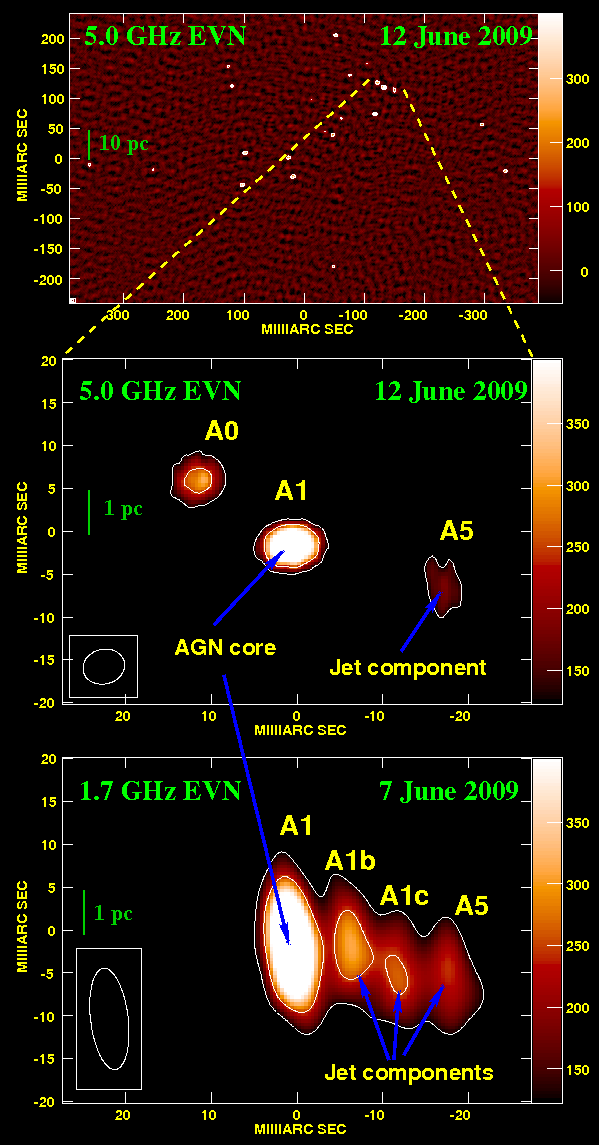
A survey of Low Luminosity Compact (LLC) sources - Results

When a radio-loud quasar goes radio-quiet
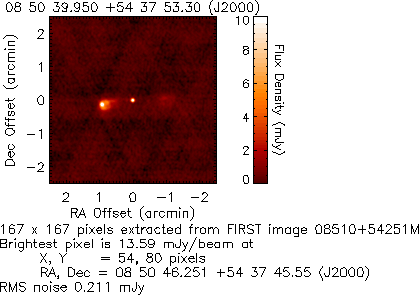
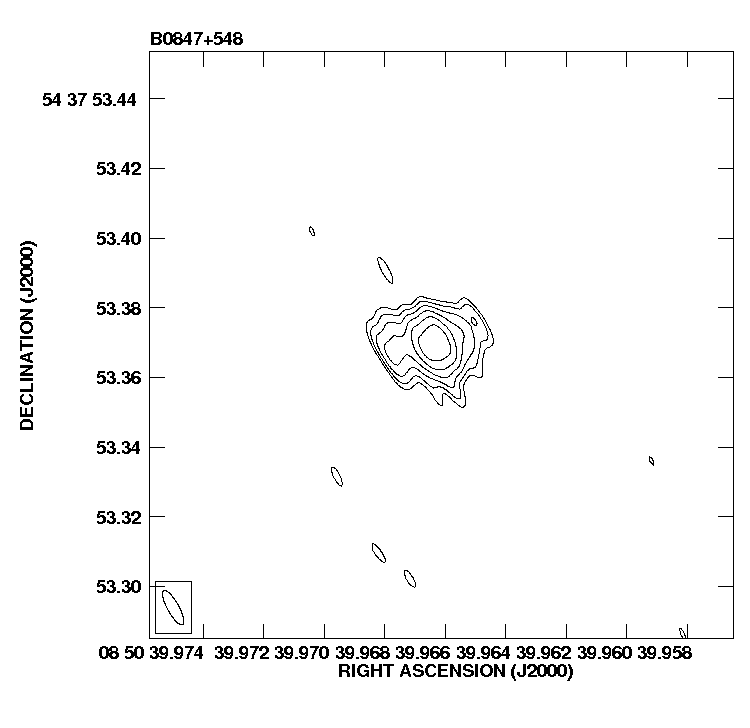
4. EVN
Technical Development and Operations
Gated/Binned Pulsar Correlation on the SFXC correlator at JIVE
Brisken, W.F., Benson, J.M., Goss, W.M., & Thorsett, S.E. 2002, ApJ, 571,
906.
Campbell, R.M., Bartel, N., Shapiro, I.I., et al. 1996, ApJ, 461, L95.
Campbell, R.M. 2001, in Proceedings of IAU Symposium 205, p.404.
Campbell, R.M. 2011, in Proceedings of the 10th EVN Symposium, 034.
http://pos.sissa.it/cgi-bin/reader/contribution.cgi?id=PoS(10th EVN
Symposium)034
Chatterjee, S., Brisken W.F., Vlemmings, W.H.T, et al. 2009, ApJ, 698, 250.
Deller, A.T., Tingay, S.J., & Brisken, W. 2009, ApJ, 690, 198.
Gwinn, C.R., Taylor, J.H., Weisberg, J.M., & Rayley, L.A., 1986, AJ, 91,
338.
Keimpema, A. & Kettenis, M. 2010, EVN Newsletter, v.25.
Moldon, J., Ribo, M., Paredes, J.M., et al. 2010, EVN Newsletter, v.26.
Sieber, W., Reinecke, R., & Wielebinski, R. 1975, A&A, 38, 169.
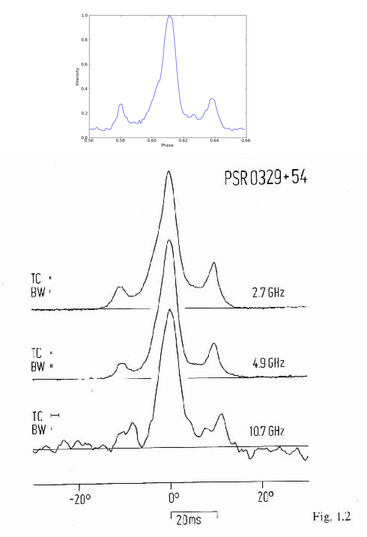
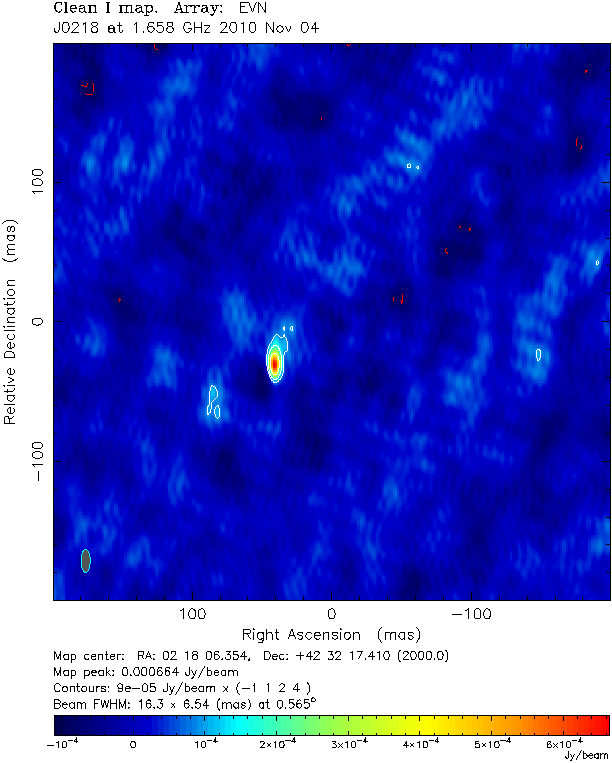
4. EVN
Technical Development and Operations
3C84, BL Lac. Earth based VLBI test for the RADIOASTRON project


Residual delay values are:
21.100 +/- 0.050 mcs for the Puschino antenna
-42.810 +/- 0.007 mcs for the Medicina antenna
12.520 +/- 0.005 mcs for the Noto antenna
Residual rate values are:
0.412 +/- 0.0005 Hz for the Puschino antenna
0.007 +/- 0.0006 Hz for the Medicina antenna
-0.002 +/- 0.0005 Hz for the Noto antenna
Values of residual delay and fringe rate were almost constant in
time for each antenna during the
observations.
Thus, they could be compensated very easily inside the correlator. For
example, the dependence of
visibility
phase on time for the second scan (source is 2200+420, lower frequency band,
RR-polarization) is shown in the Figure 3.




a. The experiment RAPL01 demonstrates the possibility to convert the Mark-5A
data into RDF data.
Antennae with different registration systems could be successfully
used for the RADIOASTRON
mission
b. The integration time value is restricted by 1 second due to a high
rate offset at Puschino antenna.
The successful estimation of the correlation function demonstrates the
possibilities of the ASC
software
correlator to compensate correctly the abnormally high values of
residual delays and fringe
rates
c. The data at the end of the ASC software correlator are relevant for
the secondary processing
d. The calibration procedures of the software known as Astro Space Locator
allow
reconstructing the visibility function
e. The (u, v)-plane coverage for the 3C84 is not sufficient to perform
the source imaging. The value of
estimated source angular size is 11 mas. This value is consisted with
the 3C84 properties available in
literature
K. Asada, 2000, Proc. Of the VSOP Symposium, 19-21 January 2000, Institute
of Space and
Astronautical Science Yoshinodai 3-1-1, Sagamihara, Kanagawa 229-8510,
Japan, p.51
K. Asada, 2006, PASJ, 58, 261
VLBI with MeerKAT - and a potential African VLBI array
The MeerKAT call for Large Survey Projects produced 21 proposals, of which
the Time Allocation Committee selected 10 to go forward. The total time
allocated to these projects is close to 5 years!
No group is more aware of the rapid advance of fibre connections between
continents than the users of the EVN, and the EVN has been quick to exploit
new connectivity e.g. HartRAO is now available on a regular basis for eVLBI
and ToO observations with up to GBit/s bandwidths via its new fibre links to
Europe and elsewhere. The new wideband fibre optic cables running around the
African coast and connecting it to other continents also mean that three 32m
antennas near the Hartebeesthoek observatory are soon likely to become
redundant as satellite communication dishes, and at least one of them will
almost certainly be taken over by the observatory for radio astronomy.


EVN
Scheduler's Report
6.
Meeting Point
Some EVN meetings - summary
